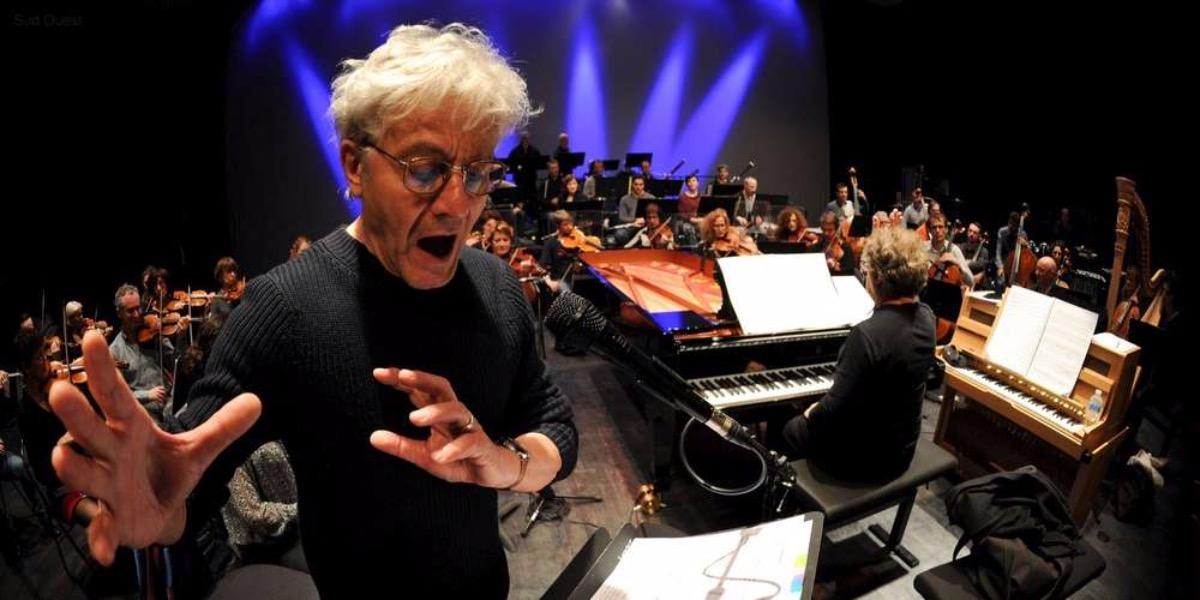Avec l'OCNA, Jean-François Heisser (piano et direction), Didier Sandre Sociétaire de la Comédie Française (récitant), sur des compositions de Jean-Claude Acquaviva et Bruno Coulais, et orchestrations de Bruno Coulais.
Sidi Larbi Cherkaoui questions and highlights the puzzles that lie behind human relations (emotional, intellectual, sexual), the morphology of the body, and intangibles like musical traditions inspired by and woven together from separate and multiple strands and traditions (so a liturgical composition sung in Spain might have Arabic roots, buried in the sands of time). With A Filetta, the Corsican polyphonic group, the Lebanese singer Fadia Tomb El-Hage (also seen in Origine) and the Japanese flautist and percussionist Kazunari Abe by his side to dissect how a song, a composition can have various sources all at once, religious and secular, Christian and Muslim, and how traditions that we so easily name European or Oriental are never that definable and monolithic, Sidi Larbi Cherkaoui salutes the delightful impurity that constitutes our lives and our planet.
Apocrifu was created at la Monnaie about two months after Myth, his first production for the Toneelhuis. Myth can be seen as a sort of provisional fusion of Sidi Larbi’s musical and choreographic world: made epic by the framework of stories which are built up, its baroque nature is seen in the language that he develops - hierarchical and full of imagery. Sidi Larbi subscribes to the idea developed by Joseph Campbell and Stanley Keleman in their work Myth and the Body, according to which, all myths have, finally, a relationship with the body: birth, growth, transformation and death. Or again, that the stories and the mythical imagery have the function of “presenting evocative, poignant images which resonate with the deepest part of what animates us, and then emerge from us to transform into action.
The inspiration for this work came partly from the maze of the island’s oral memory; there are also influences from other vocal traditions of Corsica which the singers of A Filetta have been collecting since the Rencontres de Chants Polyphoniques of Calvi first began. Four long choruses lasting a total of about 48 minutes, evoking the past loves of Medea and Jason, the epic of the Argonauts and finally the murderous fury of the repudiated wife, banned from the kingdom. A sometimes harsh music which is often tender and even fragile but which always expresses the violence of the feelings and the fear of men in face of the anger of the gods.
When the song evokes death, is it not actually celebrating life?
The cult of the dead has always been important in Corsican tradition. For more than thirty years now, many ensembles from the island have brought to public notice traditional requiems sung in polyphony (Rusiu, Sermanu, Ascu, Olmi cappella, Sartè, Calvi and more). Di Corsica riposu (Requiem for Two Visions) was commissioned for the Festival of Saint-Denis. It is a work for six voices, narrator and bandoneon.
creation site internet en corse : www.castalibre.com





